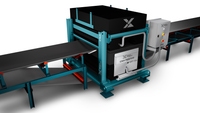Technologies for analysis of elemental composition of materials
The elemental analysis of materials is often a critical parameter in product quality and safety. For example, the correct elemental composition of raw material feed to a cement kiln is critical for smooth operation and maximum efficiency.
Equally as important, the presence of potentially harmful elements such as sulfur, sodium, potassium and mercury, must be carefully monitored as these can interfere with the process or damage the environment.
The technique best suited to accomplish elemental analysis depends on the material, its location, and industry-specific criteria.
There are many elemental analysis techniques, which serve in understanding the elemental composition of substances. It provides valuable insights into the chemical makeup of materials, helping researchers and industries make informed decisions. Whether it's analyzing the purity of pharmaceuticals, identifying contaminants in food, or characterizing geological samples.
X-ray fluorescence (XRF) is a non-destructive technique that relies on the emission of characteristic X-rays when a sample is exposed to X-ray radiation.
It is widely used for elemental analysis in diverse applications, including alloy identification, mineral exploration, and quality control in manufacturing.
Pulsed fast thermal neutron activation (PFTNA) is a specialized technique that utilizes pulsed fast thermal neutrons to activate materials.
It offers unique advantages in the analysis of trace elements and isotopes in various samples, including geological, environmental, and nuclear materials.
ICP is a high-temperature plasma source that excites atoms and ions in a sample, allowing for precise quantification of elements.
It is a versatile technique used in environmental analysis, geochemistry, and the determination of trace elements in various matrices.
AAS measures the absorption of light by free atoms in a sample. It is particularly useful for quantifying trace metals in biological and environmental samples, making it indispensable in analytical chemistry.
NAA involves bombarding samples with neutrons to induce nuclear reactions. It is a sensitive method for identifying and quantifying trace elements in a wide range of materials, from archaeological artefacts to forensic samples.
Malvern Panalytical has a range of elemental analyzers giving a choice of elemental analysis techniques. When precise analyses with minimal sample preparation are required, X-ray fluorescence (XRF) is an attractive technique to consider. It has become the 'gold standard' for elemental composition analysis in many industries.
XRF is especially suitable when analyzing solids, powders, slurries, filters and oils. For online analyses of material transported on belt conveyors, pulsed fast thermal neutron activation (PFTNA) analysis is a valuable technique. Real-time elemental analyses enable feed forward and feed back control which is critical in many processes.
Our comprehensive range of elemental solutions caters to a diverse spectrum of applications, ensuring accurate and reliable results. Explore our range of elemental analysis instrumentation below.

ZetiumSmart Zetium for reliable results and robust operation |

Epsilon rangeFast and accurate at- and on-line elemental analysis |

Axios FASTXRF of choice for highest throughput or shortest measurement time |

2830 ZTAdvanced semiconductor thin film metrology solution |

CNA rangeOn-line elemental analyzers for effective control of many industrial processes |
|
|---|---|---|---|---|---|
| Measurement type | |||||
| Thin film metrology | |||||
| Contaminant detection and analysis | |||||
| Chemical identification | |||||
| Technology | |||||
| Wavelength Dispersive X-ray Fluorescence (WDXRF) | |||||
| Energy Dispersive X-ray Fluorescence (EDXRF) | |||||
| Pulsed Fast Thermal Neutron Activation (PFTNA) | |||||
| Elemental range | Be-Am | F-Am | B-Am | B-Am | |
| LLD | 0.1 ppm - 100% | 1 ppm - 100% | 0.1 ppm - 100% | 0.1 ppm - 100% | |
| Resolution (Mn-Ka) | 35eV | 145eV | 35eV | 35eV | |
| Sample throughput | Up to - 240per 8h day | Up to - 160per 8h day | Up to - 480per 8h day | up to 25 wafers per hour | |